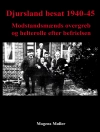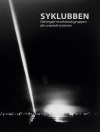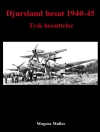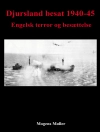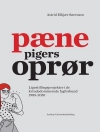The Arab–Israeli conflict goes far beyond the wars waged on Middle Eastern battlefields. There is also a war of narratives revolving around the two defining traumas of the conflict: the Holocaust and the Nakba. One side is charged with Holocaust denial, the other with exploiting a tragedy while denying the tragedies of others.
In this path-breaking book, eminent political scientist Gilbert Achcar explores these conflicting narratives and considers their role in today’s Middle East dispute. He analyses the various Arab responses to the Holocaust, from the earliest intimations of the genocide, through the creation of Israel and the occupation of Palestine, and up to our own time, critically assessing the political and historical context for these responses.
Achcar offers a unique ideological mapping of the Arab world, in the process defusing and international propaganda war that has become a major stumbling block in the path of Arab–Western understanding.
Cuprins
Contents: Preface 9 Introduction: Words Laden With Pain 13 Shoah, Holocaust, Jewish Genocide 13 Zionism, Colonialism, Uprootedness 17 Nakba 28 Part 1: THE TIME OF THE SHOAH Arab Reactions to Nazism and Anti-Semitism 1933 – 1947 37 Prelude 39 1. The Liberal Westernizers 41 2. The Marxists 55 3. The Nationalists 67 The Baath Party 68 The Syrian Social Nationalist Party 77 The Lebanese Phalange 78 Young Egypt and Egyptian Nationalism 80 The High-School Student Movement Futuwwa in Iraq 86 Iraqi Arab Nationalists and Nazism 88 Syrian Arab Nationalists and Nazism 92 Arab Nationalism and Anti-Semitism 94 The June 1941 Pogrom in Baghdad: The Farhud 99 4. Reactionary and/or Fundamentalist Pan-Islamists 103 Pan-Islamism and Fundamentalist Counter-Reformation 104 The Religion of Islam and the Jews 107 Rashid Rida 110 Shakib Arslan 118 ‘My Enemy’s Enemy’: Alliances of Convenience, Affinity and Complicity 123 Amin al-Husseini: The Grand Mufti 128 ‘Izz-ul-Din al-Qassam 131 Amin al-Husseini and the 1936 – 1939 Arab Revolt in Palestine 133 Amin al-Husseini’s Exile and Collaboration with Rome and Berlin 140 Amin al-Husseini and the Jewish Genocide 145 8 the arabs and the holocaust Amin al-Husseini, Architect of the Nakba 153 Amin al-Husseini’s Divergent Legacies 156 Part 2: The Time of the Nakba Arab Attitudes to the Jews and the Holocaust from 1948 to the Present 169 Prelude 171 The Nakba as seen by Benny Morris: A Symptomatic Trajectory 176 5. The Nasser Years (1948 – 1967) 185 ‘Throwing the Jews into the Sea’? 188 Nasserism and Anti-Semitism 193 The Eichmann Trial, Reparations, Comparisons and Holocaust Denial 200 6. The PLO Years (1967 – 1988) 211 The Programmatic Redefinition of the Palestinian Position toward the Jews 213 Transposing the Image of the Holocaust: the Battle of Comparisons with the Nazi past 220 7. The Years of the Islamic Resistances (1988 to the Present) 232 Hezbollah, Hamas and Islamized Anti-Semitism 236 From Garaudy To Ahmadinejad: Reactive Exploitation of the Memory of the Holocaust 243 Conclusion: Stigmas and Stigmatization 259 Of Anti-Semitism, Anti-Zionism, Philosemitism, Islamophobia and Exploitation of the Holocaust 260 Of Zionism, the State of Israel, Racism, the End of Denial and Peace 270 Acknowledgements 281 Notes 283 Bibliography 328 Index 345
Despre autor
Gilbert Achcar, who grew up in Beirut, is Professor at the School of Oriental and African Studies, University of London. His many books include The Clash of Barbarisms: The Making of the New World Disorder (Saqi Books, 2006), published in thirteen languages, The 33-Day War: Israel’s War on Hezbollah in Lebanon and Its Aftermath (with Michel Warschawski, Saqi Books, 2007), and Perilous Power: The Middle East and U.S. Foreign Policy, a book of dialogues with Noam Chomsky.



